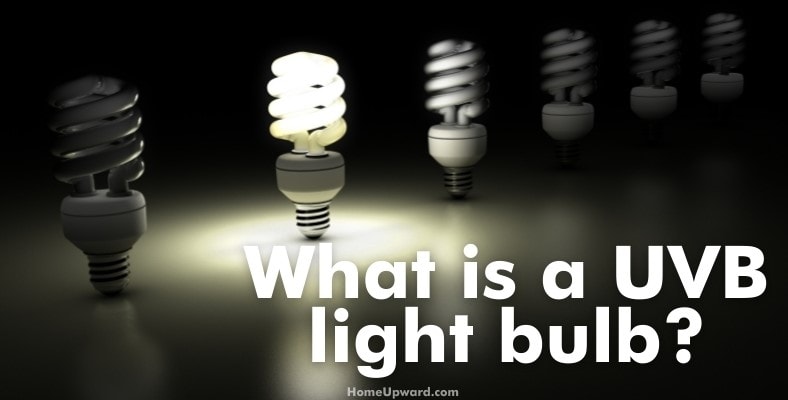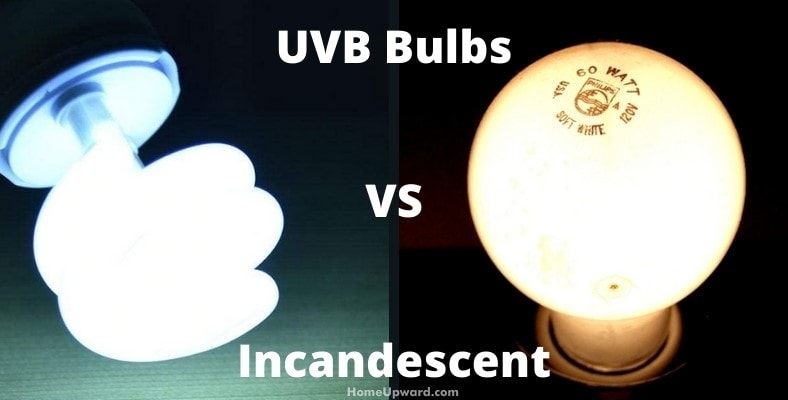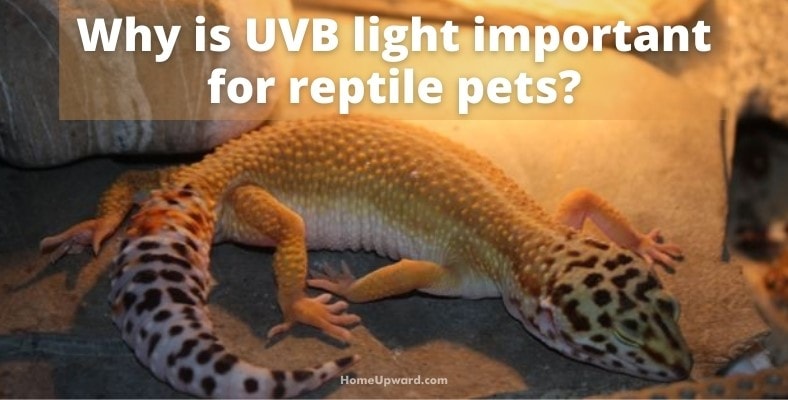There’s all kinds of light bulbs: full spectrum, UV, heat lamps (infrared), and many more types. But what makes UVB light bulbs different and what are they all about?
In this article I’ll help you better understand what they are, what they do, and much more.
Contents
What Is a UVB Light Bulb?
Ultraviolet (UV) light is an umbrella term for a spectrum of ultraviolet light wavelengths. That spectrum has classes, the most common being UV- A, B, and C. Ultraviolet light features wavelengths between 10 and 400 nanometers and is considered a short wavelength type of electromagnetic radiation that occurs naturally via sunlight and artificially, via electric arcs and ultraviolet lamps.
UV light types include, but are not limited to:
- Fluorescent tubes
- Blacklight
- Gas discharge lamps
UV lamps also are used in many different ways, including in:
- Pest control
- Medical treatments
- Cosmetic treatments
- Security verifications
- Bacteria eradication
- Vitamin production
- As a curing agent
Under the umbrella of UV lights is UVB. UVB light has a specific wavelength for ultraviolet radiation that ranges from 290 – 320 nanometers. As a component of sunlight, UVB comprises less than 15% of all ultraviolet light.
Multiple studies show that UVB encourages the production of antioxidants and flavonoids in certain plants. It also aids in synthesizing vitamin D3, which makes it easier to absorb and utilize calcium.
UVB Bulbs Versus Incandescent Differences
There are several differences between UVB and incandescent lights. The first is the amount of energy used. Incandescent bulbs consume significantly more than UVB lights, sometimes as much as 75 times more. Energy use is by far the most compelling reason to use UVB.
Indirectly, that makes UVB a superior product in regard to environmental impact. Overlooked in the debate about energy use is the reality that electricity used to power our lives, including both UVB and incandescent lighting, is often generated by the utilization of fossil fuels.
If environmental impact is the decision point, UVB wins hands-down.
Another difference is the purpose of each type of lighting. UVB lighting helps develop vitamins and antioxidants. An incandescent bulb mostly provides lighting.
Additionally, incandescent lighting tends to be much less expensive than UVB. For a cost-conscious consumer with no specific need to use UVB, this can be reason enough to purchase incandescent lighting.
Finally, a difference and a downside to UVB are that mercury is part of the final product. Incandescent bulbs have zero mercury. The presence of mercury poses a safety and health risk in the event of a UVB light breaking. Mercury, of course, is poisonous to humans.
Why Is UVB Light Important for Reptile Pets?
UVB helps reptiles produce vitamin D3. Vitamin D3, in turn, helps metabolize calcium. Reptiles cannot metabolize enough calcium through their diet, which makes UVB lighting important to a reptile’s growth and development.
When a lizard or turtle suns itself, vitamin D3 is produced.
Calcium is a vital mineral for reptiles. Without enough calcium, a reptile can develop significant health issues. These include but are not limited to chronic pain, deformities, and in severe cases, death.
The most severe risk is bone deformities or weakness. Bones that do not have enough calcium, as in humans, can be brittle and prone to fracture.
Some calcium deficiencies lead to a lower quality of life. Other calcium deficiencies can result in a skeleton caving in on itself.
Not all reptiles require UVB lighting. Generally speaking, diurnal reptiles and those that live in a tropical climate or in wide open, sunny places will need UVB lighting more than those that live in caves, under a forest canopy, or far from the equator. The reptiles that fall into this category include turtles, tortoises, lizards, crocodiles, and alligators.
When trying to figure out if a reptile needs UVB lighting, it is best to err on the side of caution. Animals that do not need it will avoid it via their daily routine. That lifestyle also means a reptile will not absorb so much UVB lighting for it to be dangerous.
What Wattage Light Bulb Is Right for Reptiles?
The important measurement in regards to UVB is not wattage so much as the intensity of the light. How much your pet needs depends on the type of reptile it is.
Equatorial, or near-equatorial reptiles, need a lot more UV lighting, including UVB lighting, than non-equatorial reptiles. The same for tropical and sub-tropical reptiles that do not reside in a rainforest.
The best way to gauge how much approximate UVB your reptile needs is to gauge how far its natural habitat is from the equator.
Animals naturally exposed to a lot of sunlight need between 10 and 12% UV light. Rainforest-oriented reptiles are next. These animals typically require 5 to 7% UVB light.
Making sure to not overexpose your reptile is as important as under-exposing it. Always follow guidelines from animal care experts that are explicitly focused on your type of reptile.
It should be noted that no recommendations should be taken without verification. Discussing exactly how much UVB a reptile needs is best done with an expert in handling and raising reptiles.
Where can I buy UVB bulbs?
There are many options for buying UVB bulbs. Important factors in deciding which way to go are to gauge whether any expert advice is needed.
Since the pricing is pretty similar, as are the options available across vendors, anyone that does not know exactly what they want should default to a pet or livestock-oriented store.
Pet stores will almost always have plenty of UV lighting options, including UVB. Any pet reptile owners that are new to caring for a reptile should strongly consider this option.
The same holds for farm and livestock-oriented stores. Each usually has experts in all aspects of animal husbandry and pet care.
If those options are not viable, big-box department and home goods stores usually carry UVB bulbs. Some smaller department stores and grocery stores will have them, although usually in smaller sizes.
With either of these options, checking whether the store carries what you want is advisable, as is verifying that they are carrying is in stock at your preferred store location.
Online options also abound. Searching for “UVB lighting” or “UVB bulbs” yields over 5M results. Many are pet or farm livestock-oriented companies, although many of the big online distributors also have a lot of UVB options.






